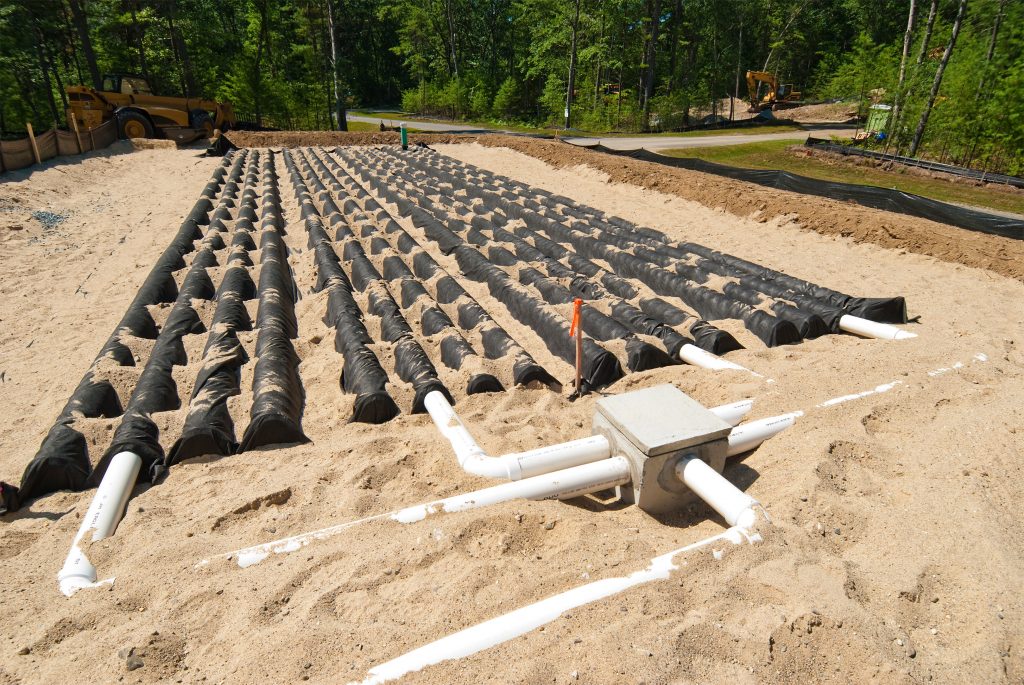
The leach field is a vital component of your septic system. It is responsible for dispersing wastewater into the soil after it leaves your septic tank, allowing it to be filtered naturally. When a leach field fails, it can lead to backups, pooling water, foul odors, and even environmental contamination. At SepTek, we specialize in leach field repair services in Dayton, Cincinnati, and across Ohio. Understanding the warning signs can help homeowners address problems before they become severe.
How the Leach Field Works
Once wastewater leaves the septic tank, it flows into the leach field—a network of perforated pipes buried in soil. The soil naturally treats and filters the water, allowing it to safely seep into the groundwater. Over time, the leach field can develop problems that prevent proper drainage and filtering. Common causes include soil compaction, excess solids from the tank, root intrusion, and overuse.
Signs Your Leach Field Is Failing
1. Slow Drains or Backups
If multiple drains in your home are draining slowly, it may indicate that wastewater is not properly dispersing in the leach field. Backups can affect toilets, sinks, and showers and are often the first visible sign of leach field issues.
2. Foul Odors
A strong sewage smell around your septic tank or yard is a warning that your leach field may be failing. Wastewater that cannot properly filter through the soil can surface and produce unpleasant odors.
3. Standing Water or Saturated Areas
Pools of water or soggy spots in the yard near your septic system are red flags. These areas indicate that wastewater is not draining correctly, often due to a saturated or damaged leach field.
4. Lush, Green Patches of Grass
Excessively green or fast-growing grass over the leach field can signal that wastewater is surfacing instead of draining properly. While it may look attractive, this is often a symptom of a failing system.
Causes of Leach Field Problems
- Clogged Pipes: Solids or scum from the septic tank can enter the leach field and clog the pipes.
- Tree Root Intrusion: Roots can infiltrate the pipes, causing blockages and damage.
- Excess Water Usage: Overloading the system with water prevents proper filtration.
- Soil Compaction: Vehicles, heavy equipment, or landscaping over the leach field can reduce the soil’s absorption capacity.
How to Fix Leach Field Issues
Professional leach field repair is essential to restore proper wastewater treatment. Depending on the problem, repair options include:
- Hydro-jetting or pipe clearing: Clears clogs in leach field pipes caused by sludge or roots.
- Leach field rejuvenation: Aerates the soil or restores proper flow to extend the field’s life.
- Leach field replacement: In severe cases, replacing part or all of the leach field may be necessary for proper system function.
Preventive Measures
- Regular septic tank pumping: Reduces solids entering the leach field.
- Conserve water: Avoid overloading the system with heavy water usage.
- Avoid planting trees near the field: Prevents root intrusion.
- Keep vehicles off the leach field: Prevents soil compaction and ensures proper drainage.
A failing leach field can lead to costly repairs, health hazards, and property damage. By recognizing the warning signs and addressing them early, homeowners in Dayton, Cincinnati, and nearby Ohio areas can protect their septic systems.
SepTek offers expert leach field repair services and drain field inspections to ensure your system functions properly. Don’t wait until a small problem becomes a major issue—contact us today.
